
Windows 10 Editions Compared
Today Microsoft has finally created tables outlining what the different versions of the operating system are going to feature. It was back in May that they finally announced all of the versions of Windows 10 that are coming, but the actual features of each version was still a mystery. We could of course take an educated guess based on history, but as of today there is finally a list of all of the features broken down by version.
As a refresh, on the PC there are four basic versions. Home and Pro are the two that will be available for most people to purchase, and Enterprise is available to customers with volume licensing agreements. There is also an Education edition targeted towards that market.
As expected, Home has the fewest features available. Much like previous versions, there is no support to join an Active Directory domain, but that was not expected either. One thing that many users were hoping to see on Windows 10 Home is BitLocker support. BitLocker is Microsoft’s drive encryption suite, and Windows 10 Home does not have this unfortunately. There can still be encryption, but only as part of InstantGo, which was formerly known as Connected Standby. InstantGo is Connected Standby plus device encryption, and that is available to Home.
Windows 10 Pro keeps support for Remote Desktop, and it can of course join an Active Directory domain just as in prior versions. It also has access to the new Windows Update for Business service, but it must be kept on the Current Version branch.
Enterprise and Education are very similar, and both offer practically the same feature set. The one big difference is that Enterprise customers can opt into the Long Term Servicing Branch whereas Education customers cannot.
Pro, Enterprise, and Education also have access to the Business Store for Windows 10, and even the Home version supports side-loading of business apps.
One thing that is nice to see is that all versions feature support for Mobile Device Management, although the Home version will not have this support initially and it will be added at a later time.
Source: Microsoft via ZDNet
Read More ...
You Might Not Get Windows 10 On July 29, But You Get A New Build Today
Another day, and another build of Windows 10 has been released to the fast ring. With Windows 10’s official release date of July 29th coming up very quickly now, Microsoft has shifted gears to bug fixes and polish. As I noted just yesterday, build 10158 and 10159 have made some big strides in stability and polish, and today’s build of 10162 is much the same. In fact, unlike all other builds so far, the blog post outlining the new build does not even list any new features other than bug fixes.
The last couple of builds have all been to the fast ring. For those that don’t follow this as closely as I do, Windows 10 Insiders can choose whether to get fast builds or slow builds, and with the latest builds there is now an option to opt out of builds altogether as Microsoft prepares for the launch. The fast ring is more likely to have bugs, and the slow ring should be a bit more stable. Although not a strict policy, fast ring builds do not normally get released as ISOs either for a clean install, but slow ring builds do get ISOs.
With 10162, Microsoft has released it to the fast ring but their internal testing shows that this is likely going to be a good candidate for the slow ring people. Assuming there are no glaring bugs discovered it should be released to slow soon. That should give them a lot more feedback as well, since there are now over five million people now in the Insider program.
Microsoft also announced today their strategy to the initial Windows 10 upgrade cycle. With Windows 10 being officially released on July 29th, you may have assumed that everyone would get the software that day, but with over a billion devices running Windows, Microsoft is going to slow the rollout somewhat.
First, very soon OEMs will receive Windows 10 so that they can prepare devices for sale. I had a chance to talk to Dell about how they are going about the process and they have been in a very active engagement with Microsoft with Windows 10 and have been working on having driver updates for all of their devices that were sold with Windows 7 or 8. They are also going to have some new launch devices with specific hardware to take advantage of new features of Windows 10 such as Windows Hello. So the OEMs are actively involved to make the transition as smooth as they can.
Next, Microsoft will provide a version of Windows 10 to retailers who will help customers perform the upgrade. Think Best Buy and the like. Quite a few PCs are being sold today that are “ready for Windows 10” and the customers may want to have it upgraded by the retailer.
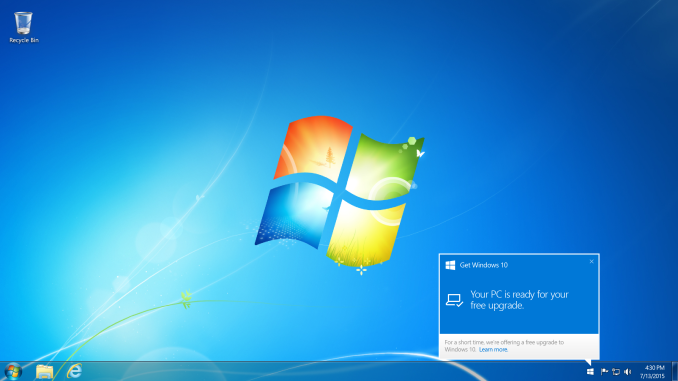
On July 29th, Windows 10 will be released to Windows Insiders first. Yes, you get to be a beta tester again. Following that rollout, the PCs that have accepted the Windows 10 reservation popup that came through Windows Update will be updated in waves. But first, the upgrade process will do a scan of your system to notify you of any incompatible hardware or software. You will be able to continue with the upgrade even if there are incompatibilities in most cases, and the upgrade process will recommend different software from the Windows Store which you can replace it with.
Finally, for business customers, Windows 10 Home and Pro will only be available on July 29th, and those that have access to the Enterprise version will be able to download it starting on August 1st which is ironically a Saturday, but I can’t imagine there are too many businesses that want to move to Windows 10 on day one.
Looking at the calendar, the launch date is quickly approaching. It is less than four weeks now for one of the more pivotal releases of Windows in quite some time.
Update: The ISOs for the new build are now available here http://windows.microsoft.com/en-us/windows/preview-iso ahead of the slow ring release for 10162.
Source: Windows Blog
Read More ...
Motherboards with DDR3L and DDR4: Biostar
With Intel’s latest extreme platform, Haswell-E and X99, supporting DDR4, all fingers have been pointing towards the state of DDR4 support for the 100-series motherboards and Intel’s 6th generation of processors, Skylake. At Computex we saw a number of 100-series motherboards, although I want to point out a couple which showcase a little of the DRAM support we should expect.
At the Biostar booth there was a H170 motherboard and a B150 motherboard that had clearly defined DDR3 and DDR4 memory slots:
The H170Z3 in show looks similar to a standard mATX motherboard using a single PCIe 3.0 x16, a couple of PCI slots, support for USB 3.0, SATA Express and M.2. It’s the DRAM slots with different spacing that act as the giveaway:
Note at the motherboard it states DDR3_A1 and DDR4_A1. Further questioning at the booth gave us two tidbits of information. Firstly, DDR3 is technically DDR3L, because the 1.35V requirement of DDR3L aligns better with the 1.2V (or 1.35V of high speed) DDR4 requirement. Regular DDR3 may work, though chances are it will not be tested. The other point of information was to be expected, because it mirrors that of the previous changeover – DDR3 and DDR4 cannot be used at the same time. As a result, this motherboard is essentially a one DIMM per channel design, but allows users an upgrade path if they already own DDR3L.
A full sized ATX-based B150Z5 with both DDR3 and DDR4 slots was also on show. It would seem (looking at the other motherboard manufacturers as well) that this type of hybrid design will not be on the Z170 series of motherboards, and is more resigned to the sub-$120 market. We would expect other manufacturers to come out with similar products as well.
Read More ...
The AMD Radeon R9 Fury X Review: Aiming For the Top
Having launched last week and being reviewed today is AMD’s Radeon R9 Fury X, the company’s new flagship single-GPU video card. Featuring a fully enabled Fiji GPU, the R9 Fury X is AMD's new Fiji GPU at its finest, and a safe bet to be the grandest video card AMD releases built on TSMC’s 28nm process. Fiji is clocked high, cooled with overkill, and priced to go right up against the only GM200 GeForce card from NVIDIA that anyone cares about: the GeForce GTX 980 Ti.
Read More ...
The MSI GT80 Titan Review: The Broadwell Gaming Laptop Your Desktop Envies
I was lucky enough to be on-hand when MSI launched the GT80 Titan at CES. It was a big event for them, and all of the MSI people were quite excited about the unique device they had come out with. Over the last couple of years, there has been a lot of traction in the enthusiast market for mechanical keyboards, and MSI decided it was time to put a fully mechanical keyboard into a gaming laptop.
Read More ...
Samsung SM951-NVMe (256GB) PCIe SSD Review
Samsung has always been an early adopter in the SSD space. The company was the first one on the market with a PCIe 2.0 x4 M.2 SSD the (XP941) back in late 2013, and before that it was the first one to adopt TLC NAND in 2012. Earlier this year Samsung's second generation client PCIe drive, the SM951, made an appearance in a Lenovo laptop, but to everyone's surprise the drive wasn't NVMe compatible like Samsung had announced earlier. That turned out to be only temporary as a few months later Ganesh discovered an NVMe-enabled SM951 inside an Intel NUC, which we have now put through our extensive SSD test suite. Can NVMe and the SM951 live up to the hype? Read on and find out!
Read More ...
ECS To Remain in Motherboard Market: Dispels Rumor
As active members of the PC components industry, we tend to try to keep our ear to the ground relating to how the different companies are approaching their product lines especially in terms of acquisitions, applications, marketing and projections. Most of what we hear is either not news or not entirely relevant for publication but helps us attempt to form a more complete picture when we do publish. One of the reasons we do this is to do with confirming sources, and making sure we publish as accurately as possible. So when a rumor started in the sphere regarding ECS’ motherboard business being moved away from the commercial side of the equation (from Digitimes and others), remaining in only OEM/ODM applications, I naturally went straight to the heart of the matter and contacted ECS for clarification. The following is a letter from Sunny Yang, ECS’ President.
Dear Our Distinguished Customers,
We feel regret to learn the untrue report from DIGITIMES pertaining to “ECS to quit own-brand DIY motherboard business, say Taiwan makers” on Jun. 24, 2015. We like to formally clarify that ECS would never give up any opportunity to work on own-brand DIY motherboard as what we always commit to our valuable customers.
We all learn the knee competition in motherboard industry. To receive the challenge, ECS has made all the efforts to manage our own brand motherboard and create more service and value to our channel customers for years. We would continue to put more resources to provide cutting edge products and marketing events as what we just announced at Taipei Computex in early June and, therefore, enhance our brand value and your confidence level.
ECS has been cooperating with you for many years, we treasure this relationship. We will also do our best to serve your needs through our global structures. We believe, through our close cooperation, a mutually beneficial result can be achieved in a long-term relationship.
Sincerely Yours.
Sunny Yang
President, Elitegroup Computer Systems Co., Ltd.
That essentially confirms that ECS will be staying in the consumer motherboard business. Personally I felt the news was a little off to begin with – at Computex ECS were showing their own brand 100-series motherboards, and even developing them with Realtek’s new Dragon network chip which is designed to go in direct competition with Killer. While it's not unheard of for big companies to pull product lines at the last second, we meet with ECS every year and the ECS Computex booth is naturally very large and they often put on a large show for it. It's important to consider how much money and marketing has been pumped into ECS’ L33T gaming brand in recent years along with their eSports sponsorship.
ECS as a brand does have a presence in the United States, and we’ve reviewed some interesting samples such as the Lucid Hydra equipped P67H2-A back in 2011 and the only overclockable AMD E350 mini-ITX board on the market, the ECS HDC-I. To this end, the latest figures we have estimated for ECS own-brand motherboard sales are around 3-4 million, which accounts for around 5% of the ~78 million motherboards a year market, but in 2009 reports have suggested they sold 17 million both as a brand and as an OEM/ODM which gives you a sense of scale as to how big ECS actually is. ECS’ main revenue generator is the OEM/ODM side, particularly in manufacturing many mini-PCs for other well-known brands, but their own brand still has value particularly in Asian regions and as the letter above shows, they are still keen on putting it into action.
Read More ...
Microsoft Brings Office to Android Smartphones
Today Microsoft announced that their line of Office applications has made its way to Android smartphones. After launching the first touch-optimized version of Office on the iPad, Microsoft has gradually been building out support for Android. It began with Office for Android first launching as a preview for ARM based tablets running KitKat, with the final release working on Lollipop. Shortly after, Microsoft began supporting Android tablets that use Intel processors, like the Dell Venue 8. Throughout all this, support for Android phones was still absent. With some Android devices having screens that are 6" or even larger, creating a version of Office for them actually made a lot of sense.
With today's release, Microsoft now supports essentially every Android device. Whether your screen is big or small, and your processor ARM or Intel, you'll be able to use Office on your Android device. Microsoft's partnerships with phone manufacturers mean that these apps will also come preloaded on many future smartphones and tablets.
Read More ...
The ASRock X99E-ITX/ac Review: Up to 36 Threads in Mini-ITX
When things get smaller, compromises have to be made. We've seen this recently in our Core-M deep dive where building a cheaper chassis yields few benefits. In the PC space, the mini-ITX form factor has held a level of fascination for small builds, so it was only a matter of time before someone built an ITX motherboard for the most extreme platform. Some compromises were made, but ASRock delivered and we were sent the X99E-ITX/ac for review.
Read More ...
Marvell Announces New Kinoma IoT Prototyping Platforms
Today Marvell announces two new internet-of-things (IoT) hardware prototyping platforms as part of their Kinoma "JavaScript-powered Internet of Things construction kit" lineup. The Kinoma Element and Kinoma HD provide alternatives to the Kinoma Create that was released last year.
The Element comes in a standalone square form-factor which I estimate should be about 7x7x1 cm. Marvell was unfortunately not able to share the exact dimensions of the piece but it looks compact enough given that it comes in a closed form-factor. The device is powered by microUSB port and has two expansion ports on opposite sides with 8 pins each that can be used for digital GPIO or analog ports and can be re-routed and re-configured by software.
The piece is powered by Marvell's MW302 WiFi-SoC microcontroller uses an ARM Cortex M4F (A variant of the M4 with an added FPU) at 200MHz and has 512KB of SRAM memory which serves as the platform's main memory. In terms of connectivity the device is capable of 802.11b/g/n but only in the 2.4GHz band and supports transfer rates of up to 72Mbit/s although those rates will in practice be probably be limited by the CPU's performance.
The device is able to make due with so little memory by employing execute-in-place (XIP) which is a method of executing code directly on it's flash storage instead of copying it to separate dedicated memory. The Element is able to run JavaScript byte-code as Marvell has implemented XIP in their new XS6 JavaScript engine.
The Kinoma HD is a beefier platform in the form of a HDMI dongle. The specifications are a tad higher as it is able to take advantage of a more powerful Marvell 88DE 3006 SoC running two ARM Cortex cores at 1.2GHz. We're still not sure what CPU we're talking about here but given it's part of the Armada 1500 family of SoCs we're likely looking at a Cortex A9 design.
As opposed to the Element which runs FreeRTOS, the HD runs a more conventional OS as it comes with a Linux distribution. It has 256MB of RAM and connectivity is provided by 802.11g/n/ac WiFi. The HDMI output is capable of 1080p and 720p resolutions.
Part of today's announcement was also the release of Kinoma's new JavaScript engine, the first independent implementation of JavaScript 6th edition scripting language. In conformance suites the XS6 engine is able to achieve 96% completeness for JavaScript 6th edition far ahead of any other JS engine. On the Kinoma platform JS6 among many language improvements also is able to provide up to 4x speed improvements for application start-up and now offers efficient binding to native C code and connect to OS and hardware features, which is something that is crucial for the KinomaJS development framework.
In the words of Peter Hoddie, VP at Marvell and former CEO of Kinoma before its 2011 acquisition:
“The
software tools used to develop embedded hardware products typically lag
leading edge software development by many years. IoT developers want
the benefits of the latest language improvements, but the memory and CPU
performance requirements put it out of the reach of mass-market
hardware. With the XS6 engine in KinomaJS, we are bringing the latest
advances in JavaScript to embedded developers before they arrive on the
web,”
The Kinoma products thus represent a very low entry-barrier for IoT development and low time and resource investment to get a working prototype application running. Most importantly, it's the price of the new products that may be most attractive as the Kinoma Element and HD come at an MSRP of respectively US $19.95 and $24.95 and can be pre-ordered now with retail availability in Q4 2015.
Read More ...
The Intel Xeon D Review: Performance Per Watt Server SoC Champion?
Eight 14nm Broadwell cores, a shared L3-cache, dual 10 gigabit MAC, a PCIe 3.0 root with 24 lanes and a lot more find a home in Intel's most powerful server SoC ever, the Xeon D-1540. Thanks to Supermicro's 5028D-TN4T superserver, we are able to compare the latest Xeon with the Atom C2000 SoC, low power Xeon E5s and the Xeon E3-1200 v3.
Read More ...
Analysing AMOLED Power Efficiency Improvements
Over
the last few years we’ve been repeatedly reporting how Samsung was able
to improve AMOLED power efficiency by employing better emitter
materials on each new device generation. This went largely unverified as
nobody really tried to accurately measure the actual power consumed by
the screen. To rectify this situation, I went ahead to try to measure
the screen power consumption of the last 4 generations of Galaxy S
devices to get a better understanding just how much emitter improvements
have contributed to screen and device battery efficiency.
AMOLED screens are emissive displays, meaning they emit light on their own without having to resort to backlights in transmissive technologies such as LCD screens. This causes white to be the most power-intensive color for an OLED screen to display because it requires all sub-pixels to operate at high emission. The advantage of OLED screen though is that for dynamic content, the technology is able to save power in comparison to transmissive displays because only the pixels which are actually used are powered up.
Because white is a worst-case power scenario, it serves well as good representation of general efficiency gains in OLED devices. I've noticed that the power composition of the display consists of the sum of individual component’s power, and was able to verify this on the Galaxy S6: the sum of pure red, green and blue (in sRGB) was largely correlating with the power consumption of pure white when you take into account APL (Average Picture Level) brightness adjustments of the display.
To get a meaningful representation of efficiency of the displays, we chart the power curve of the Galaxy S4 (E5410), Galaxy S5 (S801), Galaxy S5 LTEA and finally the newest generation Galaxy S6 at different screen luminance points:
Immediately the Galaxy S4 sticks out as the most power consuming device of the last few generations. One has to keep in mind that most of this power is not due to the display itself, but due to the lack of Panel Self Refresh on past generation devices. PSR is able to achieve better power efficient in static screen scenarios by not re-sending frame-buffer information to the screen’s display controller IC. The DDIC instead buffers the screen contents on-chip and refreshes the screen matrix that way, enabling the SoC’s display controller pipeline to shut down and save on power.
Due to inconsistencies in SoCs, DDICs and general component efficiency, each device starts at a different power value at minimum brightness. For example the Galaxy S5 is able to post by far the best value in this metric as it will consume down to 258mW while idling at minimum brightness. The Galaxy S5 LTEA and Galaxy S6 will use a tad more at around 360mW each. This is likely due to the fact because of the heightened resolution of their 1440p screens compared to the 1080p screen on the Galaxy S5.
To be able to determine the efficiency of the OLEDs themselves though, we have to look at how the luminance curve behaves for each device. To do this, one has to adjust the power numbers to compensate for this base-power consumption:
AMOLED screens are emissive displays, meaning they emit light on their own without having to resort to backlights in transmissive technologies such as LCD screens. This causes white to be the most power-intensive color for an OLED screen to display because it requires all sub-pixels to operate at high emission. The advantage of OLED screen though is that for dynamic content, the technology is able to save power in comparison to transmissive displays because only the pixels which are actually used are powered up.
Because white is a worst-case power scenario, it serves well as good representation of general efficiency gains in OLED devices. I've noticed that the power composition of the display consists of the sum of individual component’s power, and was able to verify this on the Galaxy S6: the sum of pure red, green and blue (in sRGB) was largely correlating with the power consumption of pure white when you take into account APL (Average Picture Level) brightness adjustments of the display.
To get a meaningful representation of efficiency of the displays, we chart the power curve of the Galaxy S4 (E5410), Galaxy S5 (S801), Galaxy S5 LTEA and finally the newest generation Galaxy S6 at different screen luminance points:
Immediately the Galaxy S4 sticks out as the most power consuming device of the last few generations. One has to keep in mind that most of this power is not due to the display itself, but due to the lack of Panel Self Refresh on past generation devices. PSR is able to achieve better power efficient in static screen scenarios by not re-sending frame-buffer information to the screen’s display controller IC. The DDIC instead buffers the screen contents on-chip and refreshes the screen matrix that way, enabling the SoC’s display controller pipeline to shut down and save on power.
Due to inconsistencies in SoCs, DDICs and general component efficiency, each device starts at a different power value at minimum brightness. For example the Galaxy S5 is able to post by far the best value in this metric as it will consume down to 258mW while idling at minimum brightness. The Galaxy S5 LTEA and Galaxy S6 will use a tad more at around 360mW each. This is likely due to the fact because of the heightened resolution of their 1440p screens compared to the 1080p screen on the Galaxy S5.
To be able to determine the efficiency of the OLEDs themselves though, we have to look at how the luminance curve behaves for each device. To do this, one has to adjust the power numbers to compensate for this base-power consumption:
| AMOLED Screen Power Efficiency | ||||||
| Device Minimum Power |
Device Max Power (Manual Br.) |
Screen Luminance Power at 200cd/cm² |
mW / cd / cm² (Normalized to 5.1" screen) |
|||
| Galaxy S4 | 656 mW | 1792 mW | 653 mW | 3.41 | ||
| Galaxy S5 | 258 mW | 1355 mW | 532 mW | 2.66 | ||
| Galaxy S5 LTEA | 366 mW | 1326 mW | 605 mW | 3.02 | ||
| Galaxy S6 | 358 mW | 1214 mW | 442 mW | 2.21 | ||
| Note 4 | 452 mW | 1690 mW | 665 mW | 2.69 | ||
We see a generational improvement in power efficiency for each new Galaxy S device, except the S5 LTEA. It seems that the switch to 1440p effectively brought itself with a loss in efficiency of the screen and the DDIC / base power consumption. We don’t know the details of the emitter materials used for each generation, but I’ve been told that power efficiency of a sub-pixel should theoretically go down relative to its size. The higher DPI density of the S5 LTEA might be reason for its efficiency degradation.
The Galaxy S6 offers the best evidence of new emitter and efficiency gains as it is even clear in the luminosity curve graph how even though the S6’s base power consumption is higher, it is able to catch up this to this difference and surpass the Galaxy S5 at higher brightness levels. The comparison with the S5 LTEA is the most interesting as both devices sport a 5.1” 1440p display making them perfect for an apples-to-apples comparison. Here the S6’s new display is able to exhibit a substantial 36% improvement in power efficiency.
While the generational power efficiency gains compared to older AMOLED devices is interesting, the question remains if the newest displays are now able to match up to LCD panels in terms of efficiency at high APL values.
To get a better idea how power scales depending on APL, grey-scale various colors, I went ahead graphed over 239 measurement points on several display scenarios on the Galaxy S6.
As expected, we see white being the obvious most power consuming color as it requires high intensity on all color components. We again see the interesting behavior of black and white patterns summing up to a certain %APL consume much more power than an equal grey-scale or mixed image at the same APL. As explained in our review of the Galaxy Note 4 Exynos, this is due to voltage scaling of the intensity levels of the sub-pixels. Actual brightness of the display is controlled by pulse wave modulation on top of the component voltage scaling mechanisms.
I’ve yet to measure more LCD devices to get a better picture of various panel manufacturers and screen technologies, but if we take for example the Huawei P8’s panel we can calculate a luminance-power of 332mW at 200cd/cm². Over the Galaxy S6’s AMOLED screen this still represents a 33% advantage for the LCD technology when displaying white and high level greyscale colours. To reach an equivalent amount of efficiency on the S6 one would have to have about less than 65-70% of solid white in the picture. Unfortunately Android interfaces are still dominated by high APL and white elements, so AMOLED will still trail LCDs in most default UI scenarios when it comes to luminance power. As long as white is avoided, the S6 can already claim it is more efficient than LCD devices in all other scenarios as the break-even point now reaches ~85% greyscale.
The good news though is that this gap keeps decreasing with each generation and the disadvantage is limited to pure white background content. Having even slightly grey or colored content will start shifting the scales back in favour of AMOLED devices. Running dark themes and dark backgrounds can really be advantageous for AMOLED device as they are able to achieve factors of 3-4x in luminance-power advantage over LCD devices.
I would say that Samsung still needs to
achieve another 15-20% improvement in power before AMOLED is
consistently more efficient than LCD devices in even the worst-case APL
and high white-percentage scenarios. Given the last generational
improvements and if Samsung keeps resolution constant, this seems to be
an achievable goal for next year as long as emitter research and
development continues to advance at the current pace.
Read More ...
Windows 10 Insider Activation Update: Part 2
Just a couple of days ago, Microsoft put out a blog post outlining how Windows Insiders would be updated to the release version of Windows 10. Later, they updated their original post to change some of the wording, since it basically made it sound like anyone could use the Insider program to score themselves an activated license for Windows 10. The new verbiage was subtly different but the end result was even more confusion. Today, for the third time, the post has been updated to try and clarify again, and close the giant loophole.
Now, to clarify, all Windows 7 and 8.1 customers are eligible for a free upgrade to Windows 10. This free offer extends for one year from the launch of Windows 10 which will be July 29th. If you are running Windows 7 or 8.1, you are eligible. The end.
One common question though was what about the millions of people who joined the Windows Insider program and are running Windows 10 as pre-release software already? As of Friday, Microsoft’s Gabe Aul stated that they would also get an activated Windows 10 install as long as they were using the Microsoft Account that they joined the Insider’s program with. Apparently too good to be true often is, and the company has now completely changed the terms again.
There are now three scenarios (and once again this is ONLY for people running Windows 10 as an Insider) and each is handled slightly differently. Nothing can be easy it seems.
The first scenario is that you are a Windows Insider, and you want to stay in the program. After Windows 10 launches, the Insider program will continue, and there will be fast or slow rings for testers. The Insider builds are pre-release software and are activated with a pre-release software key. Eventually these builds will expire, however there will always be a new build with a new key before that happens. If you want to stay an insider after the launch, there is nothing to be done and you will continue to have an activated copy of Windows. However, from the post, there is one more point to add: “the Windows Insider Program is intended to be installed on Genuine Windows devices” so even though they are not checking, to be in full compliance, the device running the Insider preview of Windows 10 should be a licensed computer.
The second scenario is that you have upgraded your Windows 7 or 8.1 computer to the pre-release Windows 10 build, but when the final build comes around you want to exit the program. As long as you started with a licensed Windows 7 or 8.1 PC, your PC will remain activated.
The final scenario is if you want to exit the Insider program, but you are running Windows 10 from a clean install. In this scenario, you will be required to roll back to the original operating system, and then do the Windows 10 upgrade in order to get activated. Once activated, you can do another clean install if necessary.
There are of course more scenarios that have not been covered, and only time will tell what happens to those installs. For instance, on my desktop, I started from an upgraded 8.1 install, but due to some instability of apps, I wiped out my system and installed again from the Windows 10 ISO. Am I activated? I have no idea. I suppose I’ll find out on July 29th.
The Insider program has been pretty successful for Microsoft, however their communication is not always as successful. We can only hope that it improves over time.
I’ll sign this post off with a final quote from today’s post:
“This (The Windows Insider Program) is not a path to attain a license for Windows XP or Windows Vista systems.”
Source: Windows Blog
Read More ...
Samsung Launches Two FreeSync Capable UltraHD Monitors
Today Samsung launched two new UltraHD monitors with support for AMD's Freesync technology. AMD actually announced these monitors at their Future of Compute event last year, but there wasn't much information about them beyond the fact that they would be UHD panels and ship with Freesync support. As you may know, Freesync is AMD's alternative to NVIDIA's G-Sync technology to enable variable refresh rates on displays. We've talked about how this works and the implications it has, but the most significant benefit is that it can reduce stuttering and tearing when a game's frame rate isn't synchronized with the native maximum refresh rate of the display.
As far as these two displays go, they're two different sizes of UHD panels. However, while the 23.6" model is a PLS panel, the 28" model is a TN panel like the existing U28D590D which does not have Freesync. I've organized the most relevant specifications of both new displays below.
| U24E590D | U28E590D | |
| Panel Size | 23.6" | 28" |
| Panel Type | PLS | TN |
| Resolution | 3840 x 2160 | |
| Refresh Rate | 60Hz | |
| Response Time (GtG) | 4ms | 1ms |
| Viewing Angle (H/V) | 178° / 178° | 170° / 160° |
| Inputs / Outputs | 1 x HDMI 2.0 1 x HDMI 1.4 1 x DisplayPort 1.2 |
|
| Number of colors | 16.7 million | 1.07 billion |
| Color Gamut | 100% sRGB | |
| Price | $399 | $599 |
Samsung's U28D590D was really the first affordable 60Hz UltraHD monitor, and aside from the addition of Freesync support the U28E590D is essentially unchanged. To me, the U24E590D is the more interesting display. At 23.6" it's a fairly high density UltraHD monitor, and it's a PLS panel which will definitely outperform the 28" display when it comes to viewing angles and color shift. Samsung advertises 16.7 million color support but it's not clear if that's achieved through temporal dithering or if the panel actually has an 8bit color depth for each color channel. At $399 it's also extremely affordable, and undercuts Dell's P2415Q which has been one of the most affordable non-TN 60Hz UltraHD dsplays up until this point.
The 28" U28E590D is available now for $599, and the smaller 23.6" U24E590D will be available for $399 on July 26th.
Source: Samsung via TechPowerUp
Read More ...
The ASUS X99 Rampage V Extreme ROG Review
For a number of generations, each motherboard company has had its halo product that pushes boundaries and wallets. For ASUS, the Rampage IV Extreme, based on X79, was a resounding success for sales. We sourced the next chipset iteration, the X99 based Rampage V Extreme, for review to see if ASUS can follow the trend.
Read More ...
Windows Insiders To Receive Full Windows 10
Yesterday, Gabe Aul, the head of the Windows Insider program, put up a blog post which answers one of the most asked questions regarding the ongoing Windows 10 preview program. How will Windows Insiders get access to the final release of Windows 10 as part of the free upgrade? The answer is pretty simple: be running the Windows 10 preview and be signed in with the Microsoft Account used to register as a Windows Insider.
Even better, once you have upgraded, you can then do a clean install of the operating system from an ISO and you will still be active. The product activation will be tied to your Microsoft Account.
In preparation for the final release, there will be some changes to the Insider Program and how updates are delivered, and it will prompt you to sign in with a Microsoft Account if you have not done so. However Mr. Aul was very clear to point out that once the final release is available, it will not be necessary to sign in with a Microsoft Account on any computer with Windows 10 pre-installed, or clean-installed from media. There will of course be functionality missing that is tied to the account, such as the ability to download apps from the Windows Store, but that choice will be left to the end user.
Also, and this has been said before, the Windows Insider program will continue even after Windows 10 launches on July 29th, so if you want to always have the latest programs and features, you can keep active and provide feedback as well.
If anyone is running the Windows 10 Enterprise preview edition, make note that this version will not be eligible for the free upgrade, since Enterprise requires a Volume Licensing agreement. If you are running Enterprise on a device that won’t require Enterprise after July 29th, it would likely be a good idea to reinstall the preview with the Pro version instead so that it will be updated to the full release.
I think there are a lot of people who keep wondering what the trick is going to be, with some people thinking that Windows 10 will require future payments, but the trick will be on Microsoft if they can’t get people to update to a common platform, since their entire model seems to be revolving around a common app platform and store. At Build, they stated they wanted Windows 10 to be on 1 billion devices in three years, and it really seems like they are serious about that with such a big reversal in pricing. For those that want to buy Windows 10 after July 29th, it will cost $119 for Home and $199 for Pro. Of course if you have a licensed copy of Windows 7 or 8, you will be offered the update for free for the first year.
Source: Windows Blog
Read More ...
The Cougar 600K Mechanical Keyboard & 600M Gaming Mouse Review
Our first encounter with Cougar's peripherals was just a few months ago, when we reviewed the flagship keyboard and mouse, the 700K and 700M. The 700K and the 700M were both high quality products, but they were steeply priced as well. Today we are going to have a look at their more affordable 600K mechanical keyboard and the 600M gaming mouse.
Read More ...
AMD Launches Retail Radeon 300 Series: A Prelude To Fury
Earlier this week AMD held their 2015 GPU product showcase, dubbed “The New Era of PC Gaming.” As the latest stage in AMD’s master plan, AMD held a public event in Los Angeles similar to their 2014 GPU product showcase in Hawaii, where the company announced their product lineup ahead of the full launch of the products in question. In the presentation we learned some (but not all) of the details surrounding AMD’s Radeon 300 series, including the numbered products from 360 to 390, and of course the company’s new high-end flagship video card, the Radeon R9 Fury X.
Being released today are five new cards from AMD’s partners, which will form the backbone of the Radeon 300 series from $109 to $429. To our regular readers these parts will be familiar – and to some, perhaps more familiar than they’d like – while for AMD the 300 series represents their 3rd generation of retail 28nm products. It is these products we'll be taking a look at first.
Read More ...
Comparing Snapdragon 810 v2 and v2.1: More Memory Bandwidth, Higher Clocks
Around a few weeks before the launch of the Xiaomi Mi Note Pro, I was digging through kernel source to understand Snapdragon 810 and some other Qualcomm SoCs. We had kept track of MSM8994v1 and MSM8994v2, which were relatively well understood in terms of what they represented. V1 was an engineering sample variant, which was discussed as early as September in 2014. This variant set both the A57 and A53 clusters to a ~1 GHz maximum. V2 was the first mass production revision, which was present in both the LG G Flex 2, and HTC One M9. However, shortly before the launch of the Mi Note Pro, we noted references to v2.1 in various kernel source trees.
Immediately diving into the issue, what I found was that there wasn’t much of note about v2.1 other than a change to the chip ID and other identifying information, so any formal information on the changes between these revisions is scarce. Meanwhile phones that definitely didn’t have this variant of the SoC still had references to it in kernel source, which only made it all the harder to even identify v2.1 devices in the first place. Ultimately the only way to truly verify whether a device has a certain revision of an SoC is to either see whether the file is included in the compilation process or to verify the revision by checking the device itself.
Our big break came with the release of the Xiaomi Mi Note Pro, which was among the first (if not the first) devices to incorporate a v2.1 SoC. After getting our hands on a sample of the Mi Note Pro, we were finally able to start piecing together everything in order to really understand what was going on with this new variant.
The first and most obvious change in v2.1 is a mild increase in GPU clocks from 600 to 630 MHz. This represents around a 5% increase in performance, which helps to close the gap with the 772-700 MHz Mali T760MP8 graphics processor used in the Exynos 7420 of the Samsung Galaxy S6. This is fairly obvious to anyone that runs a graphics benchmark on this new variant, although this is a best-case improvement as inefficiencies elsewhere can erode the difference.
The other differences are far more subtle. The first is that there’s noticeably less throttling on the A57 cluster compared to Snapdragon 810 v2. However even with that change - and unlike the Snapdragon 808 and competing SoCs - both variants of the Snapdragon 810 still see the unfortunate characteristic of ultimately forcing all threads off of the A57 cluster to stay within TDP limits in high load conditions, such as when running Basemark OS II’s battery test.
The second difference requires testing peak CPU bandwidth and latency between L1, L2, and main memory, which required digging into our in-house benchmark tools. In the interest of seeing 810's maximum memory bandwidth, we put together a memory multithreaded memory benchmark that runs on multiple CPU cores, and combines read and write bandwidth to try and get as close as possible to maximum bandwidth available. The figures that we present here will represent a scenario where two threads, one reading and one writing will load the memory system simultaneously. This is done to try to saturate the main memory controller and to circumvent some of the quirks of ARM's bus architecture, which has dedicated read and write ports, leading to only half the total possible bandwidth in each direction.
We’ve also tested against multiple other applications such as Rahul Garg’s RgBandwidth and RamBench to verify these observations. We also checked with instrumented runs that the CPU, memory controller, and CCI interconnect were all running at appropriate frequencies so these results should be largely unaffected by the governor due to the 100% duty cycle of the load during the test.
The graphs above are interesting, but they don’t really illustrate the relative difference between v2 and v2.1. To better show this, the graphs below represent the percent difference between the HTC One M9 and Xiaomi Mi Note Pro in this test, where positive values are an advantage in favor of Mi Note Pro, while negative values represent an advantage in favor of the One M9.
From the calculations, memory latency improves on an average of 15%, but this is mostly concentrated in the L1/L2 cache portion of the test, while the differences in DRAM are relatively small. If we change the scaling to show less of main memory, we can see that most of the variance is present in that portion of the test. Given that we’re looking at time on the order of nanoseconds, I wouldn’t think too hard about these differences either. The only interesting thing to note in the latency test is that the “memory mountain” model is still valid, where we can expect about an order of magnitude increase in latency for each level of cache that we miss, where L1 appears to take about 5 cycles at 2 GHz, then around 15 cycles for L2, then around 600-700 cycles for main memory. (To put that into comparison for PC CPUs, L3 cache usually hits up to 70 cycles and up to 150 cycles for Intel's CrystalWell eDRAM before the jump out to main memory.)
The memory bandwidth values are really much more interesting though, as there’s a consistent improvement in bandwidth across the board. There is some interesting behavior around L1 cache, but this is likely due to the previously mentioned ramp time for frequency scaling. If we just look beyond L2, into the main memory, the result is that there’s around a 33% increase in bandwidth, and a 38% average increase if we look at the entire sweep through memory.
Overall, for a 0.1 revision, Snapdragon 810 v2.1 is a pretty significant change where memory is concerned. We also see some improvements in terms of thermal management, but we yet have to fully characterize just how much this improvement is and if it's enough to be able to compete with Samsung's 14nm silicon in the Galaxy S6.
Meanwhile there were rumors floating around of a new revision due to show up in the summer, and it appears that this is the rumored revision. This leads me to question whether it made sense to release devices with the v2 revision, especially if future revisions would have resolved some notable issues and dramatically improved SoC performance. I also question whether OEMs would silently introduce these SoCs into later production runs of products that first shipped with v2, which is yet another can of worms.
Putting these questions aside, this new revision brings much-needed improvements to the Snapdragon 810, and should go a long way as a stop-gap until Snapdragon 820 begins shipping. We'll see how the change from v2 to v2.1 affects performance on a higher level in our Xiaomi Mi Note Pro review coming shortly.
Read More ...
Amazon Updates The Kindle Paperwhite
The venerable Kindle is one of my favorite tech devices. I owned the Kindle 3, but the obvious shortcoming was the lack of lighting, forcing me to use a case with a clumsy light attached. The minute the original Kindle Paperwhite was announced, I quickly ordered a couple of them and they are to this day one of my favorite pieces of technology. The Paperwhite added a “light guide” layer to the display to evenly distribute the light from the LEDs found in the bezel, which gives the e-ink display the bright white image and makes it much easier to use in dim or dark scenarios.
In 2014, Amazon released the Kindle Voyage to the US market, which is their highest end Kindle yet. It features a 300 ppi e-ink display. Today, that same display is making its way to the mid-stream priced Kindle Paperwhite which should give it even better text rendering. The new version of the Carta e-paper display has double the pixels of the outgoing model.
Amazon is also offering the choice of a new font called Bookerly, which was created specifically for reading on digital screens: “Bookerly is inspired by the artistry of the best fonts in modern print books, but is hand-crafted for great readability at any font size.”
Also announced is a new typesetting engine which is listed as “coming soon” which offers improved character placement. They have adjusted the character spacing and the new typesetting engine will do a better job of justification and hyphenation of break words to create more consistent paragraph layouts. Amazon states that this will let you read faster with less eyestrain than the current engine.
The current features like note taking and word lookup are of course staying, but will be joined by new features like Page Flip which lets you skim ahead without losing your place. I prefer to read a book the way it was written, but I know a couple of people who like to look ahead and see what’s going to happen so this will be a nice feature for them.
| Amazon Kindle Paperwhite Specifications | |
| Display | 6" Paperwhite display with Carta e-paper technology and built-in light 300 ppi, optimized font technology, 16-level gray scale |
| Size | 6.7" x 4.6" x 0.36" (169 mm x 117 mm x 9.1 mm) |
| Weight | 7.2 ounces (205 grams) Wi-Fi 7.6 ounces (217 grams) Wi-Fi plus 3G |
| System Requirements | None; fully wireless and no computer required |
| Battery Life | A single charge lasts up to six weeks (30 minutes of reading per day, wireless off and light setting at 10) Battery life will vary based on light and wireless usage |
| Charge Time | Approximately 4 hours from a computer via USB cable |
| Wi-Fi Connectivity | 802.11n (WEP, WPA, WPA2 security) Wi-Fi Protected Setup (WPS) Optional 3G Wireless on Paperwhite 3G |
| Content Formats Supported | Kindle Format 8 (AZW3) Kindle (AZW) TXT Unprotected MOBI PRC natively HTML Word (DOC, DOCX) JPEG, GIF, PNG, BMP (through conversion) |
| Included in the Box | Kindle Paperwhite, USB 2.0 charging cable and Quick Start Guide |
| Price | Kindle Paperwhite: $119 With Special Offers, $139 Without Kindle Paperwhite 3G: $189 With Special Offers, $209 Without |
The Kindle is practically the definition of a uni-tasking device, but what it does, it does really well. The battery life is one of the keys to the experience, and Amazon states that the new Paperwhite can last up to six weeks if used for thirty minutes per day with the wireless off and the display at level ten. That works out to twenty one hours of usage between charges, and with my experience that is likely not an exaggeration.
Size and weight play a key part in the Kindle experience as well, and the Paperwhite has a 6-inch display inside of a small and thin body, and it weighs just 7.2 ounces or 205 grams for the Wi-Fi only model. The 3G option adds a tiny bit more to the total.
The new Kindle Paperwhite starts at $119 with Special Offers, jumps to $139 without Special Offers, and the 3G model costs $189 or $209. Shipments start on June 30th.
Source: Amazon
Read More ...
Silicon Motion SM2256 SSD Controller Preview: TLC for Everyone
The SSD industry has been talking about TLC NAND for over three years now. We published our first post, Understanding TLC NAND, back in early 2012, but in three years we have actually seen very little TLC NAND making it to the SSD market. Samsung was an early adopter back in 2012, but aside from it and SanDisk we've yet to see any TLC drives enter the market. Silicon Motion's SM2256 is set to change that because it's the first commercially available controller and firmware combo with TLC support, which will enable companies like Kingston, ADATA and the like to use TLC NAND in their SSDs. We got an early reference design sample from Silicon Motion in for testing to see how the SM2256 stacks up with the competition, so read on to see our preliminary thoughts on the new controller.
Read More ...
AMD Shows Off Dual-GPU Fiji Card At PC Gaming Show
Briefly announced and discussed during AMD’s 2015 GPU product presentation yesterday morning was AMD’s forthcoming dual Fiji video card. The near-obligatory counterpart to the just-announced Radeon R9 Fury X, the unnamed dual-GPU card will be taking things one step further with a pair of Fiji GPUs on a single card.
Meanwhile as part of yesterday evening’s AMD-sponsored PC Gaming Show, CEO Dr. Lisa Su took the stage for a few minutes to show off AMD’s recently announced Fury products. And at the end this included the first public showcase of the still in development dual-GPU card.
There’s not too much to say right now since we don’t know its specifications, but of course for the moment AMD is focusing on size. With 4GB of VRAM for each GPU on-package via HBM technology, AMD has been able to design a dual-GPU card that’s shorter and simpler than their previous dual-GPU cards like the R9 295X2 and HD 7990, saving space that would have otherwise been occupied by GDDR5 memory modules and the associated VRMs.
Meanwhile on the card we can see that it uses a PLX 8747 to provide PCIe switching between the two GPUs and the shared PCIe bus. And on the power delivery side the card uses a pair of 8-pin PCIe power sockets. At this time no further details are being released, so we’ll have to see what AMD is up to later on once they’re ready to reveal more about the video card.
Read More ...
F-16 Schools Trillion-Dollar F-35 in Mock Combat, Fleeing is Best Option Pilot Admits
The F-35 can't attack or defend itself very well, it's no better than the F-15E at bombing, and it's worse than a drone at stealth
Read More ...
SanDisk's 200GB microSDXC Card Turns Smartphones Into Enviable PMPs
The price ($230 USD) is surprisingly tame and the Class 10 speed promises sufficiently aggressive performance
Read More ...
U.S. Navy Spends $9M USD to Cling to Windows XP, Office 2003
Contract offers near $90 USD per workstation -- but the good news is that upgrades may finally be in the works
Read More ...
Netflix Announces 7-to-1 Stock Split, Eyes Explosive Overseas Growth
Stock split is tied with Apple's for the biggest split in the past 35 years
Read More ...
Windows XP, Vista Users Can Get Free Windows 10 Upgrade Thanks to Loophole
By doing a clean install on a formatted hard drive, Microsoft has little way of checking whether your previous OS version
Read More ...
Under the Hood: Digging Into Sony's New CUH-1200 PS4, 1 TB Ultimate Player Ed.
First hardware makeover brings cosmetic tweaks, reduced weight, and an 8 percent drop in power consumption, possibly via a new SoC
Read More ...
Xbox Outsold 108-to-1 By PS4 in Japan, Weekly Sales Fall to 100 Units
Console continues to struggle worldwide, although sales woes in Japan are exceptionally bad
Read More ...
Apple Watch is Available to Order Again, 2.79 Million Units Estimated Sold so Far
Cupertino company is cashing in on pricey bands, but will it be able to live up to growth expectations?
Read More ...
Analysis: iPhone 6S May Use 6013 Aluminum Alloy Instead of 7000 Series Alloys
An analyst note suggest Apple is making key tweaks to ninth gen. model to prevent another "Bendgate"
Read More ...
Penalty-Plagued AT&T Smacked With $100M FCC Fine for Data Slowing
AT&T has been among the most flagrant in controversial mobile tactics, but scrutiny may also be in part rooted in politics
Read More ...
Microsoft Plays the Field, Backs Valve's VR Push, Too
Microsoft isn't lookin to choose favorites in spite of its cozy deal with Facebook
Read More ...
When Breaches Happen: LastPass Hack Showcases Value of Strong Encryption
Given the service's strong encryption and multi-factor authentication offerings, risk of data loss is minimal, though
Read More ...
Lumia 940 and 1040 Teased at in Alleged Leaked Images
Microsoft's new flagship devices are only a couple months from market
Read More ...
Microsoft Airs New Xbox One Controllers, 1 TB SKU, and Backwards Compatibility
After a win in April, Microsoft is hungry to try to steal the sales lead from Sony
Read More ...
Here's the Nokia Moonraker Smartwatch Which Got Killed in Favor of Microsoft Band
Smartwatch project was scrapped after the acquisition
Read More ...
Sources: Hack on Fed. Database Lost 4.1M Social Security Numbers, Personal Info
Some seek to justify more Orwellian spying, ignoring that mass domestic spying iniatives utterly failed to stop prior attacks
Read More ...
Windows 10 Will Arrive in August, w/ New Devices in Sept.-Oct.
Leading the charge will be Lumia 940 XL, according to numerous leaks
Read More ...
BlackBerry's Redesigned Passport Leaks -- With the Exact Same Hardware Inside
Leak reveals a perplexing expenditure of effort on Canadian phonemaker's part
Read More ...
Editorial: A Note to Apple on Watch Complications -- "You Keep Using That Word..."
Complications are about precision, craftsmanship, and complexity -- the antithesis of how Apple is redefining the term in Watch OS
Read More ...
In-Depth: A (Semi-Complete) Guide to What's New in iOS 9
iOS brings true multi-tasking, new "snap" style controls, new APIs, a smarter Siri, mass transit mapping, a unified "Wallet", and more
Read More ...
Facebook Begins Mass Rollout of Free Bluetooth Business "Beacons"
Project is arguably Facebook's biggest dedicate hardware effort to date, aims to realize goal of massive localized data mining.
Read More ...
Samsung Quietly Rolls Out Slick Galaxy S6 Active, AT&T Gets Exclusivity in U.S.
Model shares much with the baseline release, but loses fingerprint scanner in lieu of hardware buttons
Read More ...
Apple's OS X 10.11 "El Capitan" Cranks "Metal", Imitates Windows 7's "Aero Snap"
There's also signs that Spotlight is readying for a Siri infusion, although that will likely complete with next year's OS X 10.12 release
Read More ...
Hot Air? President Obama, G7 Pledge to Eliminate Most Fossil Fuel Use by 2100
U.S. is unlikely to reach that commitment given that its consumption of fossil fuels has increased by nearly a fifth in the last half decade
Read More ...
The Big One: Chinese Hackers Steal Records of 4 Million U.S. Gov. Employees
So much for "the best defense is a good offense"; for all its cyberspying, feds fail to stop Chinese hackers biggest attack yet
Read More ...
Available Tags:Windows , Motherboards , AMD , Radeon , MSI , Gaming , Samsung , SSD , Microsoft , Android , ASRock , Intel , Xeon , Server , ASUS , Keyboard , Amazon , Kindle , Motion , Dual-GPU , Xbox , PS4 , Apple , iPhone 6 , iPhone , Hack , Xbox , Nokia , Hack , Security , Hardware , Apple , iOS , Facebook , Galaxy , Windows 7 ,


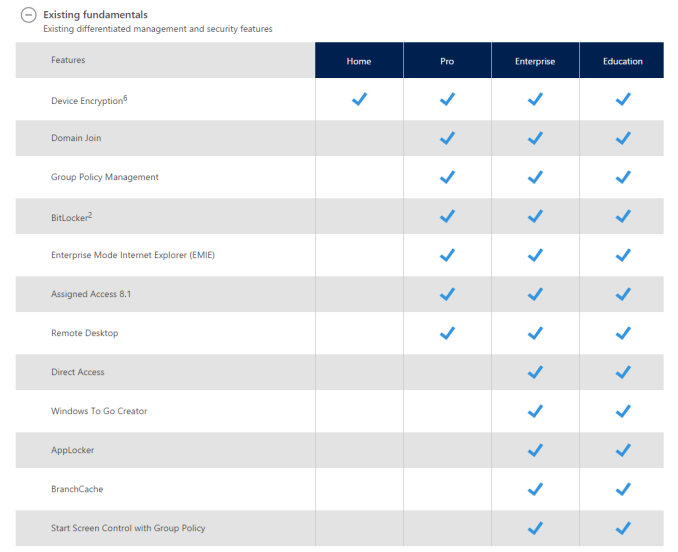
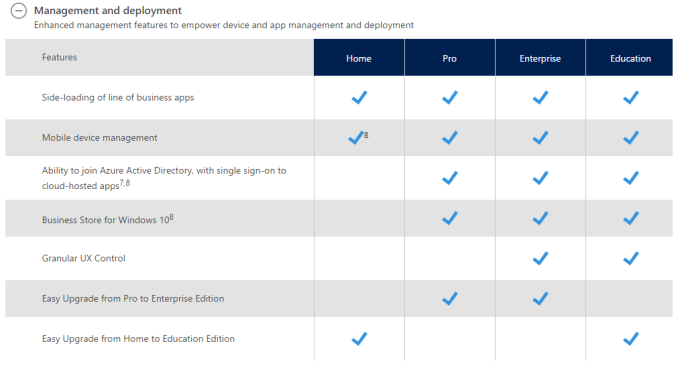
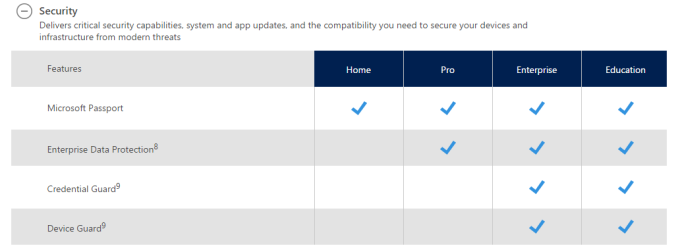
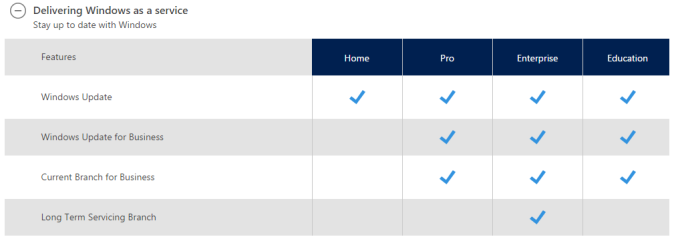

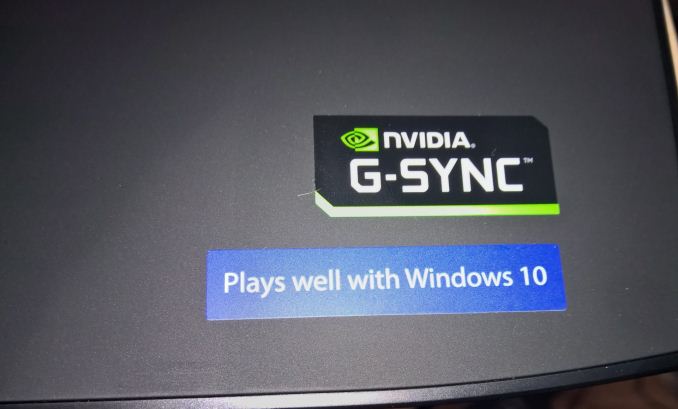
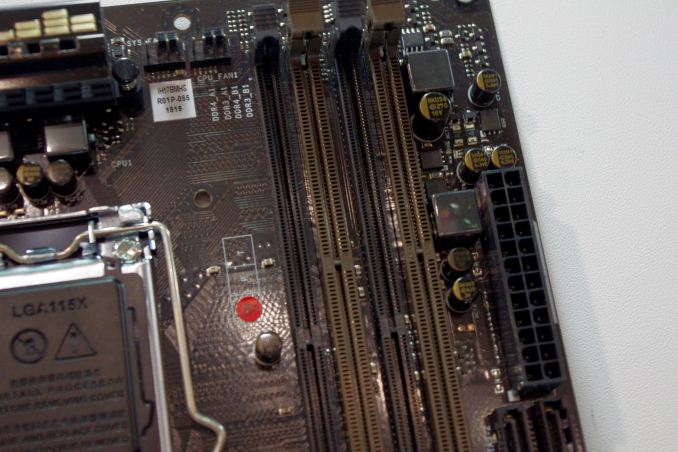
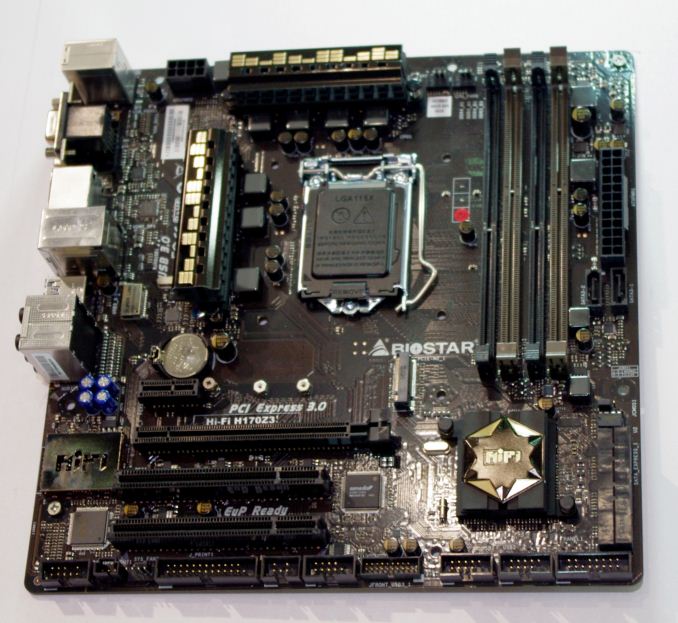
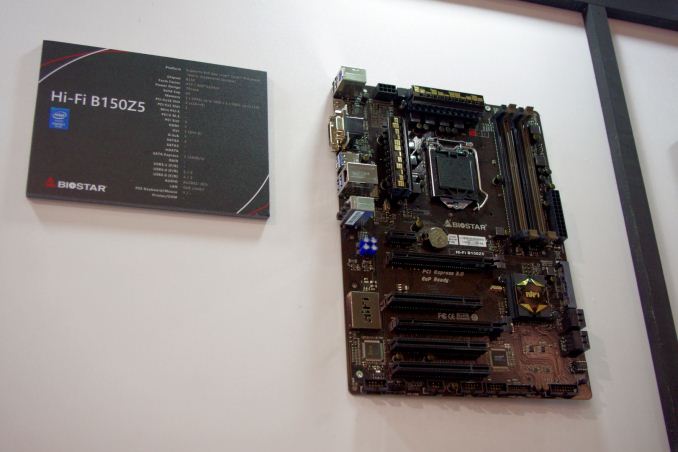





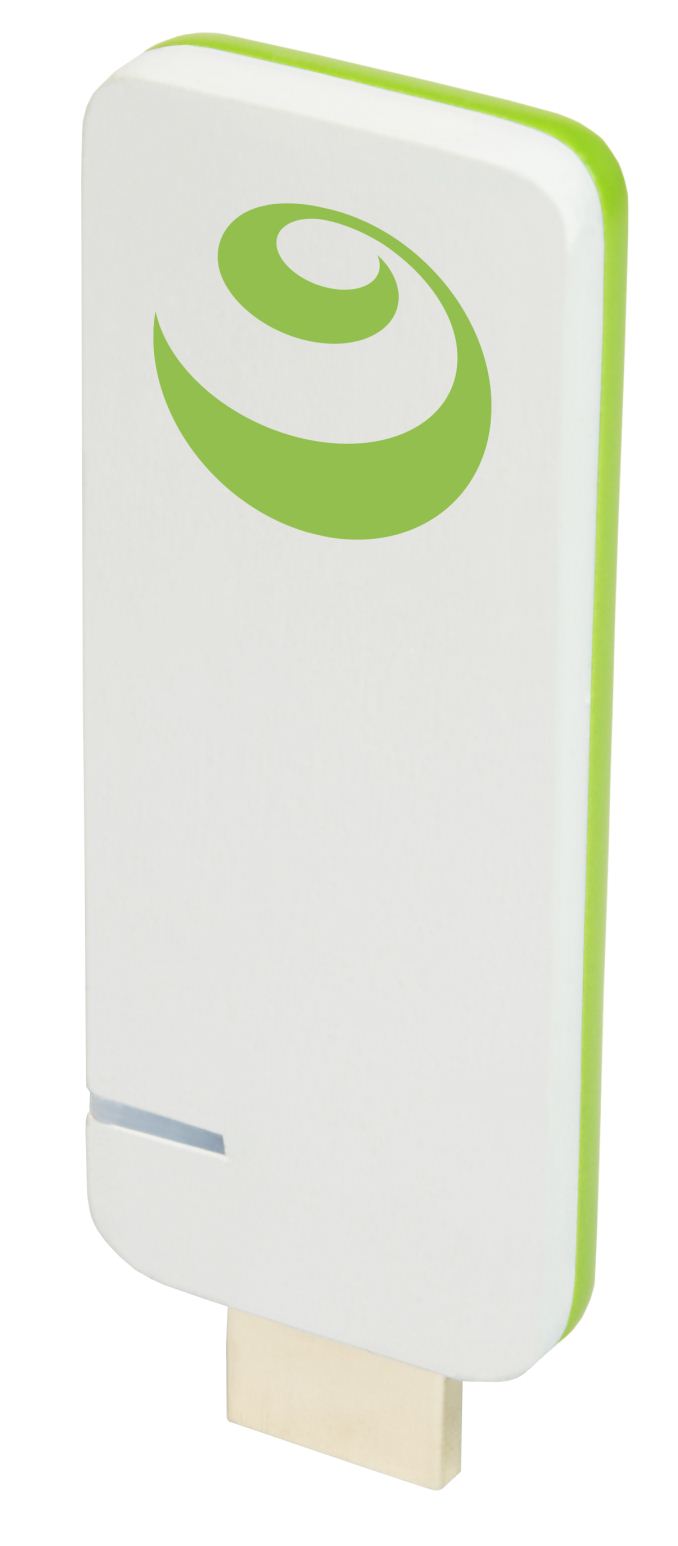
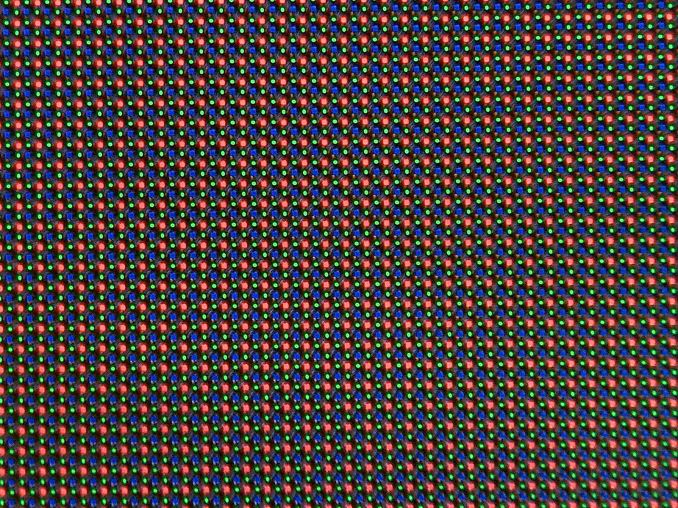
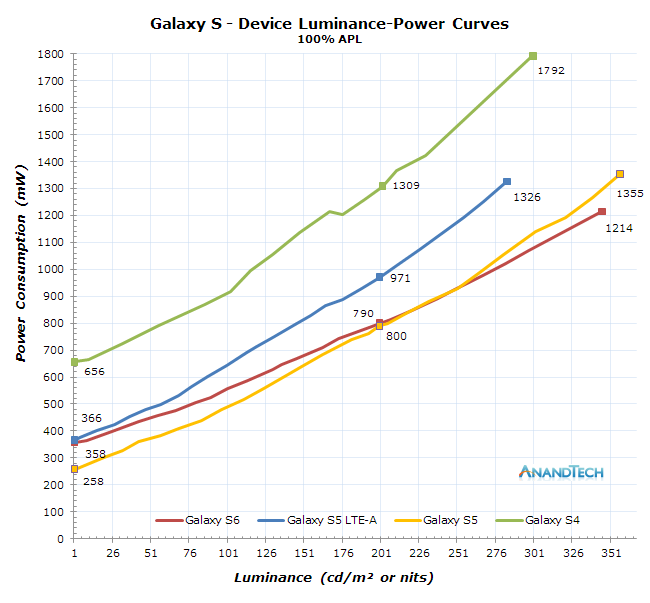



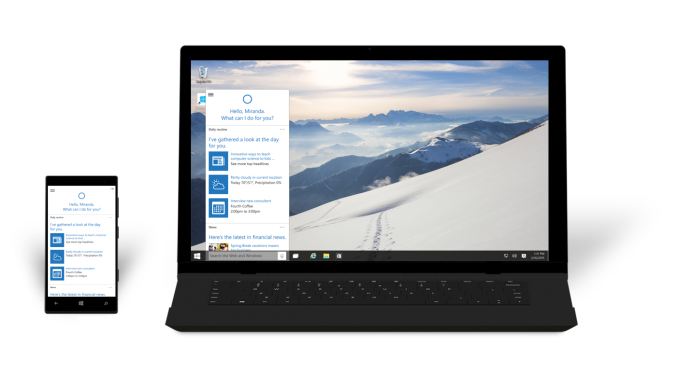


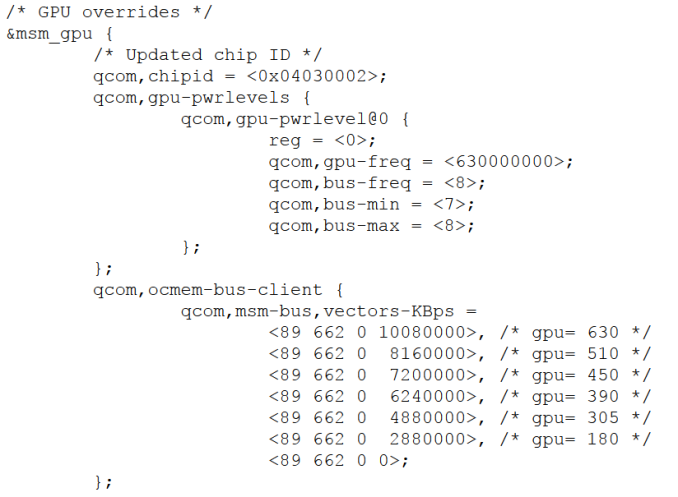
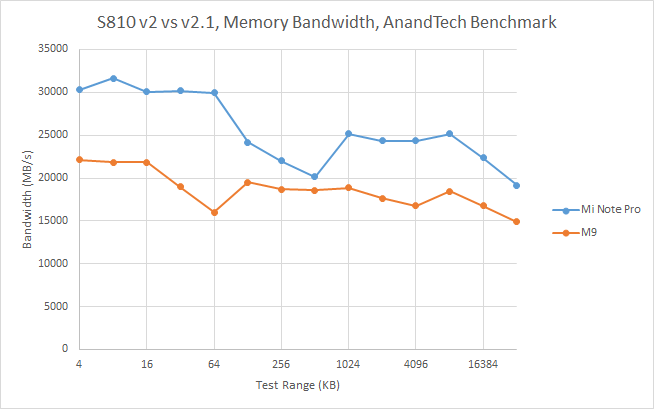
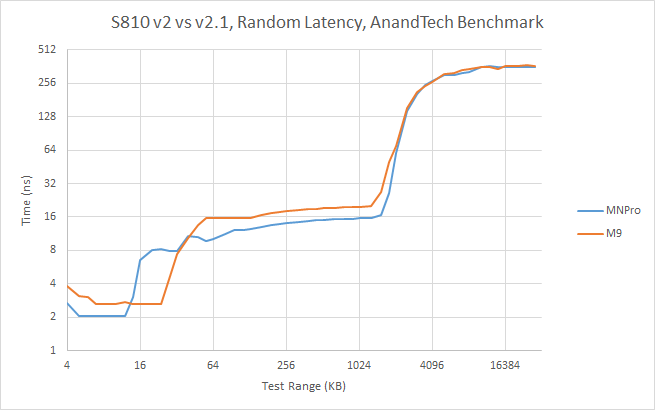
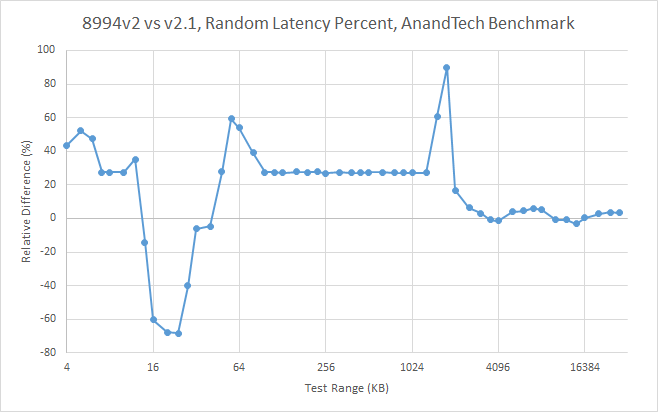
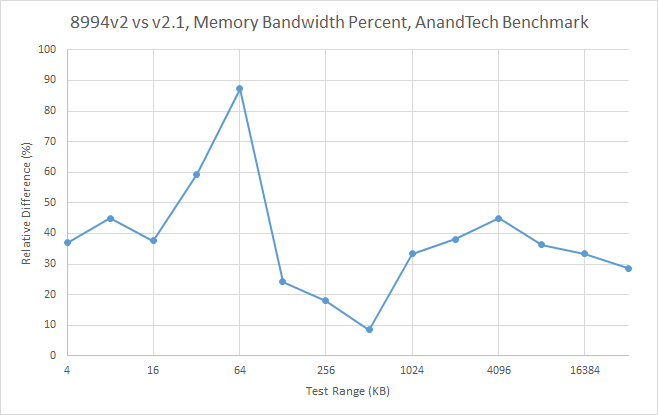


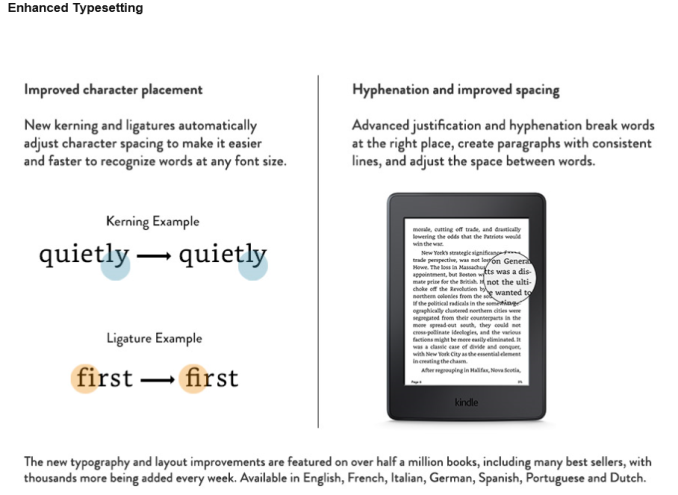


No comments:
Post a Comment